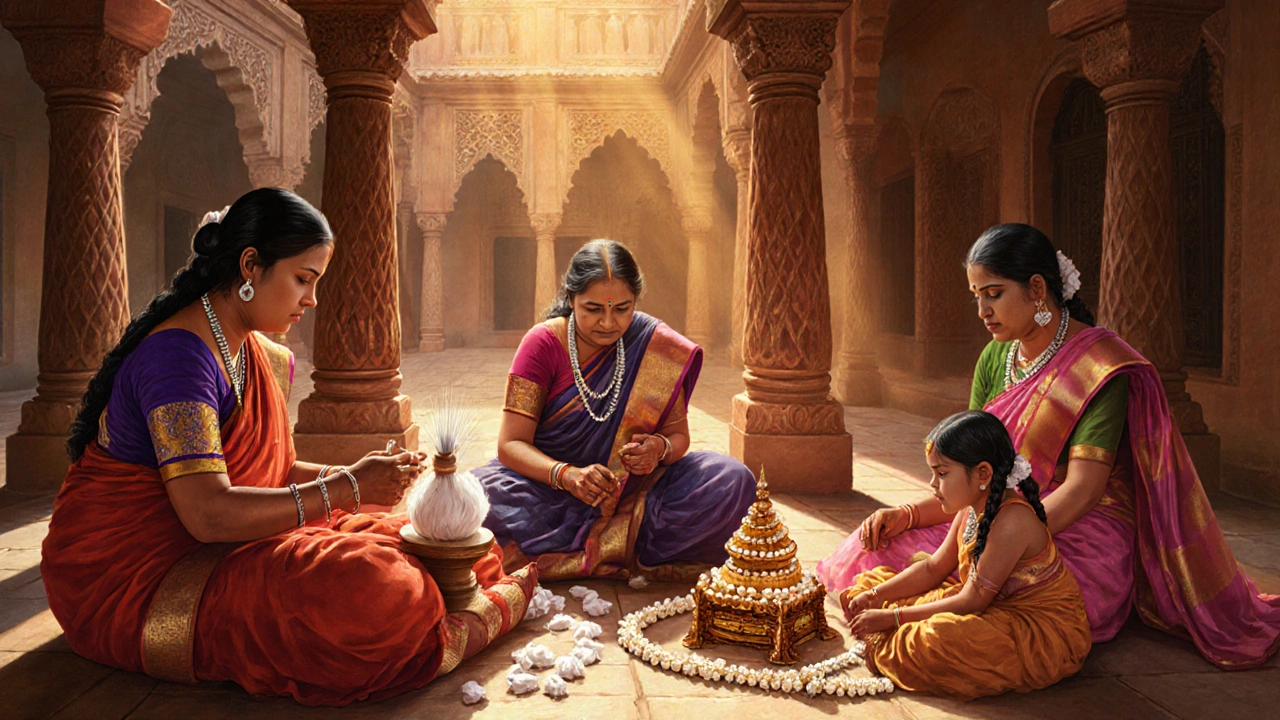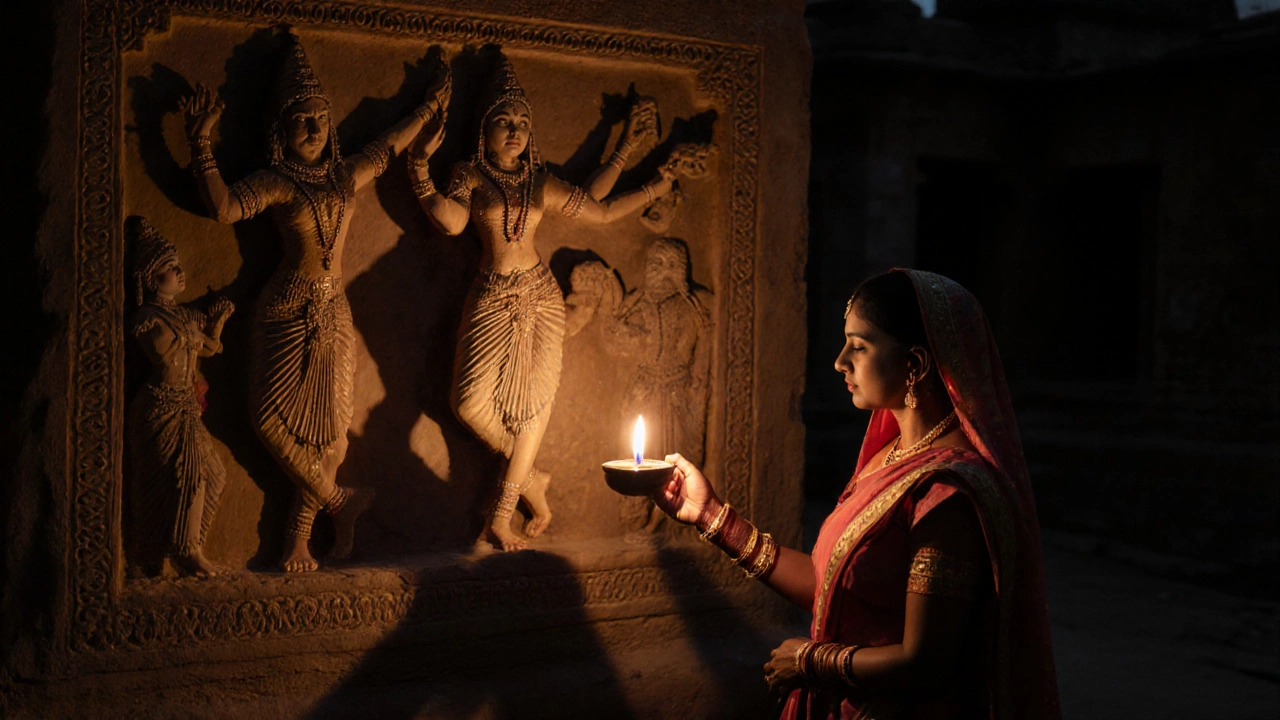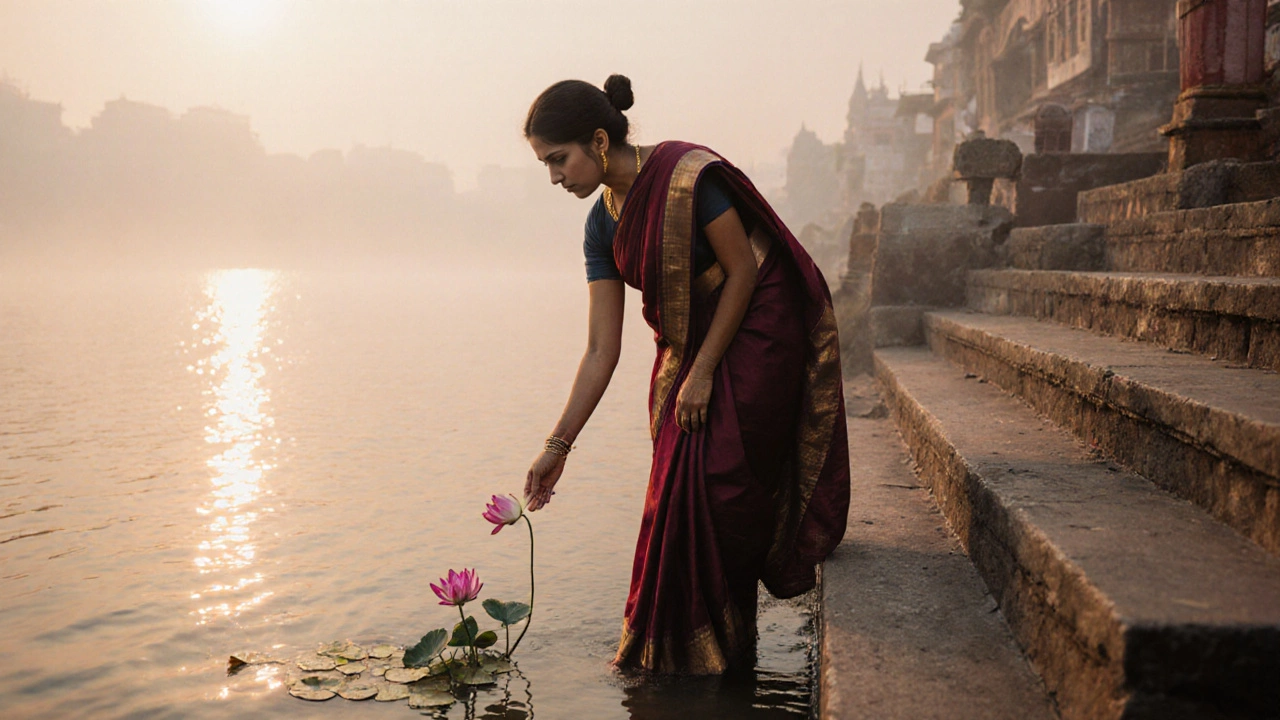Heritage Beauty Quiz
How Well Do You Understand India's True Beauty?
In Ladakh, women wear heavy silver jewelry. What is the primary cultural significance?
What does the article suggest is the true source of beauty in India?
Where would you find women embodying beauty through quiet daily rituals, according to the article?
Why does the article argue that beauty doesn't need to be 'viral' or 'seen'?
What is the article's perspective on the 'most beautiful woman' concept?
Your Results
Ask someone who the most beautiful woman in India is, and you’ll get names like Aishwarya Rai, Deepika Padukone, or Priyanka Chopra. But here’s the truth: beauty in India isn’t about who won a pageant or starred in a Bollywood film. It’s woven into the streets of Varanasi at dawn, the quiet strength of a grandmother weaving silk in Kanchipuram, the laughter of a girl walking to school in a village near Hampi. The most beautiful woman in India isn’t a celebrity. She’s the sum of a thousand quiet, unrecorded moments shaped by centuries of heritage, resilience, and grace.
Beauty Isn’t a Contest - It’s a Culture
India doesn’t have one standard of beauty. It has dozens. In Ladakh, women wear heavy silver jewelry that weighs down their hair, not to impress, but to carry the weight of ancestral tradition. In Odisha, brides wear red and gold silk with intricate ikat patterns passed down for generations. In Rajasthan, women paint their eyes with kohl not just for looks, but because it’s believed to ward off the evil eye. These aren’t fashion choices. They’re living history.
When you visit the Meenakshi Temple in Madurai, you’ll see hundreds of women in silk saris, their hair tied in tight buns, offering flowers to the goddess. Their beauty isn’t polished for cameras. It’s worn like armor - dignified, unapologetic, rooted. No filter. No pose. Just presence.
Heritage Sites Hold the Real Portraits
If you want to understand Indian beauty, go where the cameras don’t follow. Stand at the entrance of the Qutub Minar in Delhi at sunrise. Watch the women in traditional chaniya cholis walking through the ancient stone arches, balancing pots on their heads. Their movements are rhythmic, calm, unhurried. That’s beauty - not because of their features, but because of how they carry themselves in spaces shaped by emperors and poets.
At Khajuraho, the carvings on 10th-century temples don’t just show erotic scenes. They show women dancing, bathing, braiding hair, holding children. These weren’t fantasies. They were everyday moments, immortalized because they mattered. The beauty in those carvings isn’t about symmetry or skin tone. It’s about vitality, agency, joy.
Even in the quiet corners of Fatehpur Sikri, you’ll find elderly women sitting under stone pavilions, spinning cotton on charkhas. Their hands are rough. Their backs are bent. But their eyes? Sharp. Clear. Full of stories older than the Mughal walls around them.
The Myth of the Pageant Queen
For decades, Indian media told us beauty meant fair skin, slim waistlines, and flawless makeup. Miss India winners were held up as ideals. But those ideals were imported. They didn’t come from the villages of Bihar or the hills of Nagaland. They came from colonial standards and global advertising.
Real change started when women began reclaiming their own definitions. A woman from Manipur wearing her traditional phanek and headscarf on a Mumbai street. A tribal woman from Jharkhand with intricate body tattoos, selling handmade jewelry at a heritage fair. A Dalit woman from Tamil Nadu teaching girls to read under a banyan tree. These women don’t fit the mold. And that’s why they’re more beautiful than any crown could make them.

Beauty Is in the Doing, Not the Looking
Think about the women who wake up at 4 a.m. to prepare offerings at the Jagannath Temple in Puri. They scrub the temple floors with their bare hands. They carry heavy pots of milk and flowers through crowded alleys. No one applauds them. No one posts their photos. But their hands are the reason the rituals continue. Their quiet labor is sacred.
At the Ajanta Caves, you’ll find frescoes of women from 2,000 years ago - wearing earrings, holding lotus flowers, dancing. The artists didn’t paint them to be perfect. They painted them to be alive. That’s the Indian truth: beauty isn’t about being flawless. It’s about being real.
What Happens When You Stop Looking for the ‘Most Beautiful’?
When you stop asking who’s the most beautiful, you start noticing something deeper. You notice the woman in a Chettinad mansion in Karaikudi, carefully arranging jasmine garlands on her ancestral altar. You notice the widow in Varanasi who still sings bhajans every evening, even though her voice is cracked with age. You notice the young girl in Assam learning to weave muga silk from her grandmother, her fingers moving slowly, deliberately.
These women aren’t famous. But their lives are monuments. And monuments don’t need to be tall to be powerful. They just need to last.

Where to See This Beauty for Yourself
If you want to witness the real face of Indian beauty, skip the glossy magazines. Go here instead:
- Chettinad, Tamil Nadu - Watch women in handwoven Kanjivaram saris, their jewelry passed down for five generations.
- Khajuraho, Madhya Pradesh - Walk the temple grounds at dusk. Watch local women light oil lamps beside ancient carvings.
- Bhagalpur, Bihar - Visit a silk-weaving village. Talk to the women who make Tussar silk. Their hands tell stories you won’t find in textbooks.
- Puri, Odisha - Be at the Jagannath Temple at sunrise. Watch the women who serve the deity, their devotion written in their steps.
- Chamba, Himachal Pradesh - Find the women who still embroider Chamba Rumals - tiny cloth squares with stories stitched in thread.
You won’t find Instagram hashtags here. But you’ll find something better - authenticity.
Why This Matters Now
In a world obsessed with filters and influencers, Indian heritage reminds us that beauty doesn’t need to be seen to be real. It doesn’t need applause. It doesn’t need to be viral. It just needs to be lived.
When you travel to India’s heritage sites, you’re not just visiting ruins. You’re walking through living museums where women are the keepers of culture. Their beauty isn’t in their face. It’s in their hands, their voices, their silence.
The most beautiful woman in India isn’t on a magazine cover. She’s the one you’ll never see on TikTok. But if you’re quiet enough, patient enough, you’ll meet her - in the shade of a temple pillar, beside a spinning wheel, or on a dusty road leading to a forgotten shrine.
She’s not looking for your approval. And that’s what makes her beautiful.
Is there an official list of the most beautiful women in India?
No. India has never had an official list. Beauty pageants like Miss India are media-driven contests, not cultural authorities. Real beauty in India is defined by tradition, community, and personal dignity - not by judges or votes.
Why do people associate beauty with fair skin in India?
The idea that fair skin equals beauty came from British colonial rule, which promoted lighter skin as a sign of higher status. This was later amplified by advertising and media. But today, more Indians are rejecting this myth. Movements like #DarkIsBeautiful and heritage tourism are helping people reconnect with their natural diversity.
Can I see this kind of beauty on a typical tourist trip?
Only if you go beyond the usual spots. Most tourist itineraries focus on monuments, not people. To see real beauty, you need to wander into local markets, visit temples during rituals, talk to artisans, and spend time in villages. It’s not about where you go - it’s about how you look.
Are there any Indian women who are changing how beauty is viewed?
Yes. Women like Manushi Chhillar, who used her Miss World platform to advocate for menstrual hygiene, or Dr. Nandini Sahu, who runs heritage conservation projects in Odisha led by tribal women. Even everyday women - like the weavers of Chanderi or the potters of Khurja - are redefining beauty through their work, not their appearance.
How does heritage relate to beauty in India?
Heritage and beauty are inseparable. Indian beauty isn’t just about physical traits - it’s about the clothes worn, the rituals performed, the songs sung, the crafts practiced. These traditions are passed from mother to daughter, and they carry dignity, skill, and identity. To see beauty in India is to see heritage in motion.
